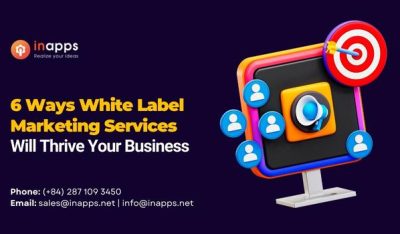- Home
- >
- Inbound Marketing
- >
- Update tips to write copy for Advertising
Writing Copy For Advertising – Infographic Tip Sheet is an article sent to you by the InApps editorial team. Hope readers will have more useful knowledge at www.inapps.net
What is Ad Copy?
Ad copy or copywriting is the text of an advertisement and is delivered through several methods, with the end goal of a completed conversion.
The conversion can be a sale, a download, data collection, a social action, such as a Facebook like, a YouTube play, a reTweet, and so on.
Before writing copy for advertising, there should be a great deal of research and planning.
Figure out the Who, What, When, Where, How and Why of whom you are targeting: what you are offering, where the ad will be seen, when the ad will be displayed, how the message will be delivered, and why the reader would benefit from your offer.
How Should Ad Copy Be Written?
The most important text should be at the top of the page, or displayed more prominently with bigger fonts, or bolder colors. Unless the point is to be informative, ad copy should be concise.
It is meant for readers who are inundated with ads all day long.
You want to get the message across quickly and share as much information as possible, so people can decide if they need your offer or not, and go on with their day. Ad copy should also include a call to action that makes the reader act and respond.
Who are you writing for?
When writing ad copy, the desired audience and their actions must always be taken into consideration.
Who are they?
Where will they be reading or hearing your ad?
How much time do they have to receive your message? The list goes on.
Different types of ad copy:
- Print – Magazine, Newspaper, Direct Mailers
- Radio – Commercials & Sponsorships
- TV – Commercials & Sponsorships
- Online – Banner Ads, Videos, PPC Ads
- Outdoor – Billboards, Signs
- Indoor – Point of Purchase, In-Store Displays, Aisle End Caps, Sporting Event Placement

Ad Copy Techniques:
Just like there are several vehicles to send a message to the people, there are also several ways to speak to them; which is another key to remember, you are speaking to your customer, and asking them to complete a conversion, not yelling at them and making demands.
The following 5 examples are just the tip of the iceberg:
- In your face – Ad copy with exaggerated calls to action, bright colors, and big fonts, usually in all caps. This is the one time when yelling is okay. “ACT NOW! LIMITED TIME OFFER! WHILE SUPPLIES LAST!” In-your-face ad copy such as this, is meant to get your attention and act, not give you any details about a product or sell it, it just lets you know it is available, and it won’t be for long. So hurry up and buy!
- Comical – A good old-fashioned joke always works, just make sure not to offend anyone, or shine a negative light on your company or service. A funny ad campaign based around a character, such as The Old Spice Guy, can yield endless opportunities for comical ad copy that engages your reader.
- Institutional – Institutional ad copy uses the power of your brand to back up claims and sell the product. Iconic brands such as Macy’s, Chevrolet, and Apple can write ad copy based around their proven track record.
- Educational – A more in-depth explanation about the product that is informative and outlines a product’s features, advantages, and benefits. A perfect example of educational ad copy is the Amish Fireplace, and ad that usually runs in Sunday papers and coupon sections. You probably have never read the whole thing, but they leave you with no questions about what the product does. They left nothing out!
- Testimonials – Testimonials are a staple in the advertising world. They feature celebrity endorsements, expert analysts, and you, the regular user. Writing ad copy in a testimonial manner includes actual quotes meant to sell a product, so these ads should be persuasive and compel the reader to act.
Examples of Good vs Bad Ad Copy:
Good
- Zappos Sneaker Ad – The ad copy lets you know you’ll get your sneakers quickly, you won’t pay for shipping, there is no minimum order, and you can return the product for free as well. This leaves you with virtually no questions.
- Match.com Facebook Ad – Great headline for their obvious target, single men. This ad copy tells a man he can find pictures of single women, and that 1 in 5 relationships start online so he has a good chance of finding one if that is what he’s looking for.
- Tobacco Ad – Here is an example of just how effective ad copy can be. This little 8 word sentence is just as powerful as a foldout pamphlet. “For More Information On Lung Cancer, Keep Smoking.” The copy is so perfect in this ad it takes center stage and needs no help from pictures or fancy backgrounds.
Bad
- HP Cloud Facebook Ad – Instead of asking what you will do in the cloud, HP Cloud should tell you what you can do with it and outline their features. Their headline could say more about the product as well, rather than just letting us know it is now available.
- Radio Ads – Often times you will hear long-winded scripts that distract the listener from the goal, selling a product or service. You only have 15-45 seconds to get your idea across in a radio ad, don’t clog it up with unnecessary words, and don’t make it too informative with too many details for the listener to write down, such as multiple email addresses, phone numbers and street addresses. Send them to one place that is easy to remember and has all of your info. Make every word count.
Follow this to make sure you’ve got Writing Copy For Advertising – Infographic Tip Sheet. Save and share with those around you these extras.
To learn more about Inbound Marketing
Contact us:
www.inapps.net
Let’s create the next big thing together!
Coming together is a beginning. Keeping together is progress. Working together is success.




















